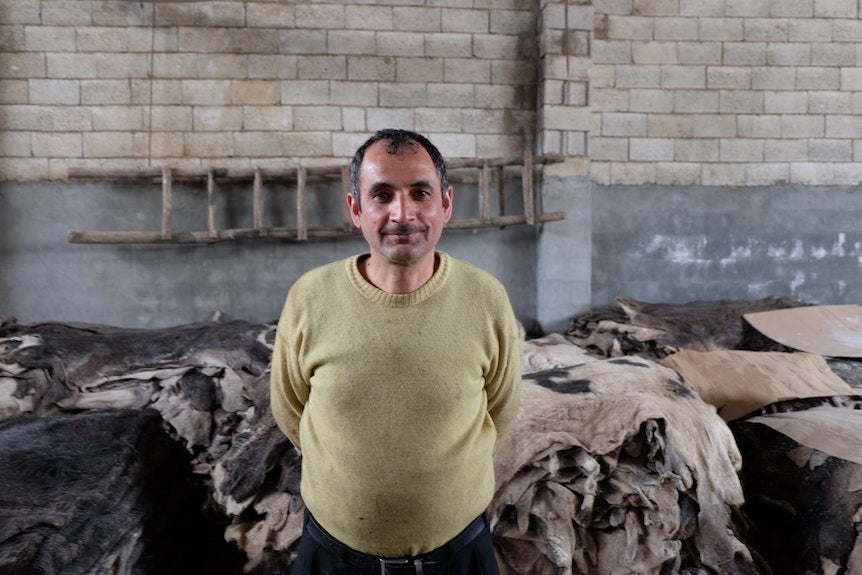Sabahs are unique for more than one reason. Perhaps their most salient characteristic, though, is the water buffalo leather that acts as the true sole of the shoe. A thing of the past, requiring a very traditional tanning process, few makers employ the use of water buffalo nowadays.
I had the chance to spend an hour with the owner of the tannery where we source that leather recently. Like most things in Gaziantep, one of the oldest cities in the world, the tannery is quite storied.


The tannery was founded nearly 200 years ago. The owners of our workshop and the tannery have worked together since that time. The tannery's famous buffalo leather was used specifically to make the traditional Turkish shoes that inspired Sabahs.
In the early 1900s, the owners of both businesses were drafted to fight in World War I with the Turkish Army. They are the current owners' great grandfathers.
The great grandfather from the tannery was sent to Yemen. There he was captured and spent 30 years as a prisoner of war. In his absence, his wife ran the tannery. It's a rare sight to see a woman in the leather business in Turkey today and certainly in the early 1900s.

The great grandfather of our shoe business, Mustafa - he too was Yemen-bound. Traveling by train, his unit made a quick stop in Jarabulus, Syria. Mustafa was running late, missed the departure time and therefore his train to Yemen.
Stuck in Jarabulus, the Syrians asked him - what can you do for us? He told them of his famous shoe business back in Gaziantep. For the next three years, Mustafa repaired the soldiers' shoes and equipment when it came back from battle. Most of the men in his unit did not return home to Gaziantep. By virtue of missing a train, "our" great grandfather eventually did.

Today, the tannery still employs traditional methods to produce the same water buffalo leather they've been producing for two centuries.
After a hide is vegetable dyed in a large drum, it is smoothed out by hand as seen above. The smoothed leathers are then stretched across a wooden stick (these sticks look quite old themselves) and hung to dry inside. This process is repeated three times over for three days. On the fourth day, once the leather is laying flat - it is taken to the roof of the building where it dries for another 24 hours in a shady wind.

I learned that the hides of these leathers are sourced from Northern Iraq. The leather is a by-product of meat... a question we often get asked.
Below is a photo of the owner, Ertugrul, and his son. They are very hands-on and personally work with the leather themselves daily. Their business is small, but consistent.

One of the benefits of working directly with owners who have longstanding family relationships is that we get what we need and we can even experiment.
Since starting Sabah, we noticed inconsistency in the water buffalo leather which resulted in inconsistency in our shoes. Some were softer, some more firm. It made stitching difficult and fit inconsistent too.
We realized that certain parts of the hide should be tanned differently to create a more consistent product. We also realized a few tweaks to the process (those are "Sabah trade secrets") can improve quality and longevity. We now have our own proprietary Buffalo leathers produced exclusively for Sabah. And we've seen an improvement in quality with that change.
A long day finished, we now head to dinner with our head craftsman and his family. Everything in Gaziantep ultimately comes back to: "What should we eat next?"
Cheers from Gaziantep!
Sincerely,
The Sabah Dealer




